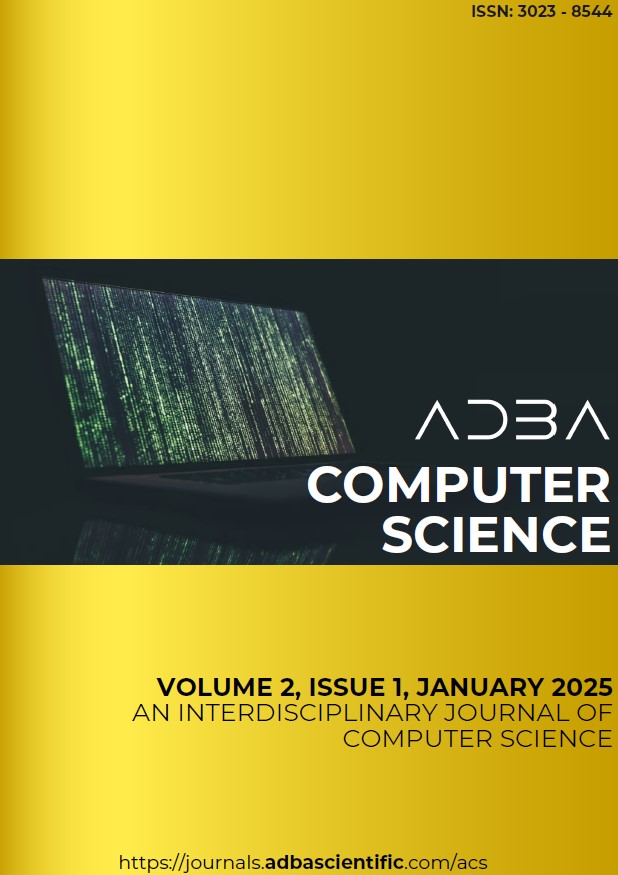Abstract
Artificial intelligence-driven prediction models have emerged as powerful tools for estimating material properties with high accuracy, yet the preparation of training datasets often demands labor-intensive and time-consuming experimental procedures. Leveraging the Computational Materials Science (CMS) approach, this study utilizes phase transformation calculations and thermodynamic data to simulate the mechanical properties of Ni-Cr-Fe alloys. Using JMatPro software, mechanical properties (0.2% Proof Stress, Fracture Stress, and Young's Modulus) of 50 Ni-Cr-Fe alloy compositions were simulated across a temperature range of 540–920°C, generating a dataset of 1000 rows. This dataset was used to train an Artificial Neural Network (ANN) model, with 80% allocated for training and 20% for validation and testing. The trained AI model demonstrated robust predictive capabilities, achieving a 96,61% accuracy rate in forecasting material compositions with the desired thermo-physical properties at specific temperatures. To validate the model's reliability, predicted alloy compositions were re-simulated under identical conditions in JMatPro, confirming the high fidelity of the model's predictions. The results underscore the efficacy of Computational Materials Science (CMS)-generated datasets as a scalable and reliable source for training AI models in materials science. This study highlights the potential of integrating Computational Materials Science (CMS) and Machine Learning approaches to accelerate material design and development processes, delivering significant improvements in prediction speed and accuracy.
References
Behera, A., A. K. Sahoo, and S. S. Mahapatra, 2024 Effect of heat treatment on the morphology and mechanical properties of the novel Ni-based superalloy with machinability assessment through electrical discharge machining. Proceedings of the Institution of Mechanical Engineers, Part E: Journal of Process Mechanical Engineering 0: 09544089241286724.
Chen, W.-C., F.-Y. Teng, and C.-C. Hung, 2014 Characterization of Ni–Cr alloys using different casting techniques and molds. Materials Science and Engineering: C 35: 231–238.
Du, Y., Y. Yang, A. Diao, Y. Li, X. Wang, et al., 2021 Effect of solution heat treatment on creep properties of a nickel-based single crystal superalloy. Journal of Materials Research and Technology 15: 4702–4713.
Filipoiu, N. and G. A. Nemnes, 2020 Prediction of equilibrium phase, stability and stress-strain properties in co-cr-fe-ni-al high entropy alloys using artificial neural networks. Metals 10: 1–10.
Francis, J. M., J. A. Jutson, and J. H. Buddery, 1967 An oxidation study of Ni-Cr-Fe alloys in carbon dioxide at 800 to 1000° C. Journal of Materials Science 2: 78–87.
Goodfellow, A. J., E. I. Galindo-Nava, C. Schwalbe, and H. J. Stone, 2019 The role of composition on the extent of individual strengthening mechanisms in polycrystalline Ni-based superalloys. Materials Design 173: 107760.
Handbook, A., 1991 Heat Treating of Aluminum and Its Alloys. In Heat Treating of Nonferrous Alloys, ASM International.
Jain, R., U. Lee, S. Samal, and N. Park, 2023 Machine-learning-guided phase identification and hardness prediction of Al-Co-Cr-Fe-Mn-Nb-Ni-V containing high entropy alloys. Journal of Alloys and Compounds 956: 170193.
Jeon, J., G. Kim, N. Seo, H. Choi, H.-J. Kim, et al., 2022 Combined data-driven model for the prediction of thermal properties of Ni-based amorphous alloys. Journal of Materials Research and Technology 16: 129–138.
Ju, J., Y. Ma, J. Chen, L. Shuai, and Y. Zhang, 2024 Effect of Heat Treatment on Structure Evolution and Mechanical Property Strengthening of Low-Cobalt Nickel-Based Superalloy. Metals 14.
Liu, C., X. Wang, W. Cai, and H. Su, 2024 Prediction of magnetocaloric properties of Fe-based amorphous alloys based on interpretable machine learning. Journal of Non-Crystalline Solids 625: 122749.
Liu, X., R. Hu, C. Yang, X. Luo, Y. Hou, et al., 2023 Strengthening mechanism of a Ni-based superalloy prepared by laser powder bed fusion: The role of cellular structure. Materials Design 235: 112396.
Mukhamedov, B. O., K. V. Karavaev, and I. A. Abrikosov, 2021 Machine learning prediction of thermodynamic and mechanical properties of multicomponent Fe-Cr-based alloys. Physical Review Materials 5: 1–9.
Nembach, E. and G. Neite, 1985 Precipitation hardening of superalloys by ordered γ-particles. Progress in Materials Science 29: 177–319.
Saunders, N., 2010 The Application of Thermodynamic and Material Property Modeling to Process Simulation of Industrial Alloys. pp. 132–153.
Smith, T. M., N. A. Zarkevich, A. J. Egan, J. Stuckner, T. P. Gabb, et al., 2021 Utilizing local phase transformation strengthening for nickel-base superalloys. Communications Materials 2: 106.
Vijayakumar, P., R. S., M. Rusho, and G. Balaji, 2024 Investigations on microstructure, crystallographic texture evolution, residual stress and mechanical properties of additive manufactured nickel-based superalloy for aerospace applications: role of industrial ageing heat treatment. Journal of the Brazilian Society of Mechanical Sciences and Engineering 46.
Wang, Y., B. Ghaffari, C. Taylor, S. Lekakh, M. Li, et al., 2021 Predicting the energetics and kinetics of Cr atoms in Fe-Ni-Cr alloys via physics-based machine learning. Scripta Materialia 205: 114177.
Wu, Y., H. Zhao, J. Li, Y. Zhang, J. Liu, et al., 2022 An innovative approach towards forming the serrated grain boundaries and refining the γ precipitates in nickel-based superalloys. Journal of Alloys and Compounds 908: 164570.
Zielinska, M., M. Zagula-Yavorska, P. M, and J. Sieniawski, 2010 Thermal properties of cast nickel-based superalloys. Archives of Materials Science and Engineering 44.

This work is licensed under a Creative Commons Attribution-NonCommercial 4.0 International License.

